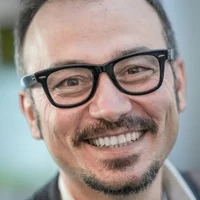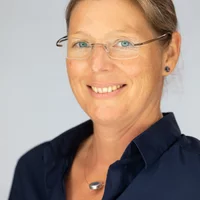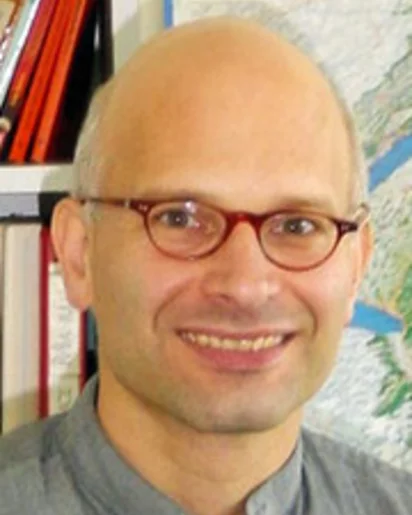Biography
Thomas Jung heads the Molecular Nanoscience group at the Laboratary for Micro- and Nanotechnology of PSI and the Nanolab of the University of Basel since since 2002. In 2009, he was promoted Honorary Professor and faculty member at the Faculty of Natural Sciences of the University of Basel. ( https://www.physik.unibas.ch/people/prof-jung.html )
He has contributed to about 150 scientific articles with an average number of almost 40 citations. These scientific accomplishments were covered ~60 times by the general press (e.g. NZZ, Basler Zeitung, Aargauer Zeitung, 20-minuten, New Scientist), by ~20 feature pages in newspapers and journals and radio; tv-broadcasts. From 1999 to 2002 he held the Presidency of the Swiss Physical Society. He held a visitor's position at the National Institute of Materials Science in Tsukuba, Japan, i.e. in their Materials Nano Architectonics program; he had been invited Scientist at the University of Wisconsin, Madison (with F. J. Himpsel) and Invited Professor at University of Kyoto (with K. Matsushige). Also, He was, for more than 10 years serving as a scientific committee member for the European Commission, is advisory board member for scientific journals and he organized and co-organized several conferences and workshops to promote scientific issues as well as the public understanding of science and technology.
Thomas Jung obtained a Diploma in Solid State Physics and Biophysics from ETH Zürich in 1987 after Thesis work on Photoemission (with H.C. Siegmann) and a Ph. D. in Solid State Physics and Surface Physics from the University of Basel in 1992. In his Ph. D. he developed dedicated Atomic Force Microscopy experiments for nanomechanics, magnetic imaging and for single flux line investigations above superconductors (supervised by H. J. Guentherodt). He implemented AFM at PSI's Zürich Research Laboratory (formerly RCA, later CSEM) before joining IBM's T. J. Watson Research Laboratory in Yorktown Heights NY (US) as a Post Doctoral Fellow in 1992. Here he worked on the electronic states of metallic wires and islands. (with Ph. Avouris and F. J. Himpsel) Between 1994 and 1997 he experimented with individual molecules, their self-assembly, positioning and their conformation at IBM's Zürich Research Laboratory in Rüschlikon, Switzerland (with J. K. Gimzewski).
Institutional Responsibilities
Leading the ‘Molecular Nanoscience’ group including its facilities: The Surface Science Laboratory and the Photo Emission and Atomic Research Laboratory (PEARL) at the Swiss Light Source. Operation of the Atomic Force Microscopy User Laboratory. Develop the strategic planning of these, as a contribution to the Surface and Interface Science activity of PSD and other departments. Personnel and financial management, external funding from private and public partners, supervision of the scientific and technical staff and the projects including group external facilities and staff. Faculty member benefits (PhD rights) and duties (reviewer, examiner, voting member) in the Natural Sciences Faculty of the University of Basel and group leader of the Nanolab at their Physics Department. Academic teaching in the form of giving a Master Lecture on ‘Surface and Interface Science’; supervision of educational projects (student interns, lab-internal ‘Block courses’ and Bachelor and Master, PhD Theses) for the Physics, Physical Chemistry and Nanoscience Curriculum.
Strategic lead for performing outstanding academic and industrial research in nanoscience by exploiting spectro-microscopy correlation and nanostructuring by bottom-up self assembly. Planning, improvement and implementation of new experimental facilities and competences. Member/ Reviewer of various internal and also external committees for funding agencies, research institutions, faculty search and promotion and for the operation and management of scientific journals.
Selected Publications
1. Seminal reports on unexpected or new magnetic interactions between magnetic molecules and magnetic substrates. This activity includes the discovery of 2D ferrimagnetism in a binary molecular checkerboard assembly on Au(111). The system exhibits remanence at low (~3K) temperatures and is attributed to a complex and unique balance of Kondo and RKKY interactions.
Long‐range ferrimagnetic order in a two‐dimensional supramolecular Kondo lattice. Girovsky J., Nowakowski J., Ehesan Ali, M., Baljozovic M, Rossmann H.R., Nijs T., Aeby E., Nowakowska S., Siewert D., Srivastava G., Wäckerlin C., Dreiser J., Decurtins S., Liu S.X., Oppeneer P. M,. Jung T.A., Ballav N., Nature Communications 2017, 8:15388 | DOI: 10.1038/ncomms15388
Induced magnetic ordering in a molecular monolayer, Scheybal A., Ramsvik T., Bertschinger R., Putero M., Nolting F., Jung T.A., Chemical Physical Letters 2005, 411, 214-220
2. Electronic quantum well arrays providing unique opportunities to investigate and modifiy localized and delocalized quantum states therein.
Configuring electronic states in an atomically precise array of quantum boxes. Nowakowska S., Wäckerlin A., Piquero-Zulaica I., Nowakowski J., Kawai S., Wäckerlin C., Matena M., Nijs T., Fatayer S., Popova O., Ahsan A., Mousavi S.F., Ivas T., Meyer E., Stöhr M., Enrique Ortega J., Bjork J., Gade L.H., Lobo-Checa J., Jung T.A. small 2016, DOI: 10.1002/smll.201600915
Band formation from coupled quantum dots formed by a nanoporous network on a copper surface. Lobo-Checa J., Matena M., Müller K., Dil J.-H., Meier F., Gade L.H., Jung T.A., Stöhr M. Science 2009, 325, 300-303; DOI: 10.1126/science.1175141.
3. Atom by atom condensation experiments performed in quantum boxes provided by a porous coordination network. A very distinct filling pattern reveals the complexity of the site-specific condensation influenced by the network, the substrate and the electronic state in the pore. Using these quantum box arrays, VdW forces between pairs of noble gas atoms i.e. Xe-Xe, Xe-Ne and Xe Kr have been measured.
Watching nanostructure growth: kinetically controlled diffusion and condensation of Xe in a surface metal organic network. A. Ahsan, S. F. Mousavi, T. Nijs, S. Nowakowska, O. Popova, A. Wäckerlin, J. Björk, L. H. Gade, T.A. Jung, Nanoscale, 2019, 11, 4895. Interplay of weak interactions in the atom-by-atom condensation of xenon within quantum boxes.Nowakowska S., Waeckerlin A., Kawai S., Ivas T., Nowakowski J., Fatayer S., Waeckerlin C., Nijs T., Meyer E., Bjork J., Stohr M., Gade L.H., Jung T.A. Nature Communications 2015; DOI: 10.1038/ncomms7071. Van der Waals interactions and the limits of isolated atom models at interfaces Kawai S., Foster A.S., Bjorkman T., Nowakowska S., Bjork J., Federici Canova F., Gade, L.H., Jung T.A., Meyer E. Nature Communications 2016; DOI: 10.1038/ncomms11559.
Scientific Research
The Molecular Nanoscience group is building and operating addressable nanostructures geared towards future spin-, quantum- and electron-based applications in devices and for specifically functional surfaces and materials.
The properties of the atomically precise supramolecular structures are explored by local and non-local physico-chemical experiments (i.e. by local probes and X-ray photo-absorption and photo-electron spectroscopy, also at advanced Synchrotron Light Sources) to explore their site specific local vs their cooperatively interacting behaviour. With his training in Physics and his specialization in Biophysics and Surface/Interface Science, Thomas has continuously been active in Applied Science. This led to ground breaking innovations for current or future products in collaboration with e.g. Roche, Sony, ABB, HighTec, Ferrovac, Straumann, Nanonis-SPECS.
Thomas’ group is also running the unique facility of the Photo Emission and Atomic Research Laboratory (PEARL) at PSI ( https://www.psi.ch/en/sls/pearl ) as well as they are responsible for the the Atomic Force Microscopy Userlab of PSI ( https://www.psi.ch/en/lmn/scanning-probe-microscopy ). The high resolution Scanning Probe Microscopy and –Spectroscopy work is also performed in the Nanolab ( http://nanolab.unibas.ch/ ) of the Swiss Nanoscience Institute and the University of Basel.


